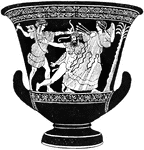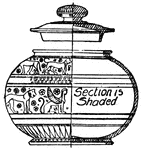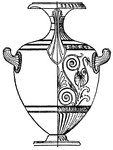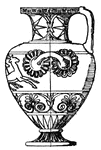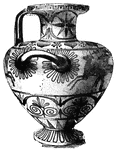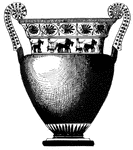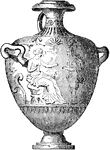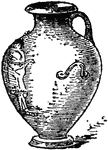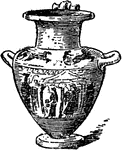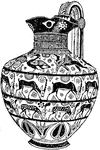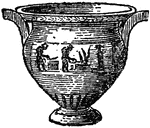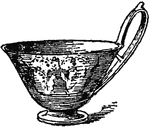The Greek Vases ClipArt gallery offers 113 illustrations of vases of Greek origin, many displaying Greek gods and goddesses, or ancient battles. The most common forms of Greek vases in this gallery are the amphora, krater, hydra, kylix, lekythos, oinochoe, and rhyton.
Alabastrum
"A small elongated vase for unguents or perfumes, rounded at the bottom and provided with a broad rim…

Amphora
"A jar with two handles; Among the Greek and Roman, a vessel, usually tall and slender having two handles…
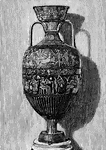
Amphora
"A jar with two handles; Among the Greek and Roman, a vessel, usually tall and slender having two handles…

Amphora
Amphoræ are jars with narrow necks and two handles, used by ancient Greeks for transporting oil…

Amphora
Amphoræ are jars with narrow necks and two handles, used by ancient Greeks for transporting oil…

Amphora
Amphoræ are jars with narrow necks and two handles, used by ancient Greeks for transporting oil…

Amphorae
"A vessel used for holding wine, oil, honey. The following cut represents amphorae in the British Museum.…

Greek Aryballos
This Greek Aryballos is a small spherical shape with a narrow neck. It is used as a perfume vase.

Cantharus
"A king of drinking cup, furnished with handles. It was the cup scred to Bacchus, who is frequently…
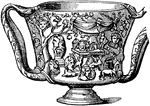
Carchesium
"A beaker or drinking-cup, which was used by the Greeks in very early times. The same term was used…
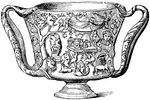
Carchesium
"The carchesium was a beaker, or drinking-cup, which was used by the Greeks in very early times. It…

Cup
An illustration of a cup designed by Euphronios, an ancient Greek vase painter and potter, active in…
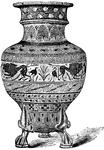
Fictile Vase
"Fictile vase, from Athens. Design in black, on drab ground." — Encyclopedia Britanica, 1893

Engraved Greek Pitcher
Elaborate engravings decorate this elegant Greek pitcher. Women in traditional garb and horses are shown…
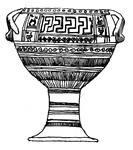
Greek Vase
Geometric style vase, often called "Dipylon style" or "Dipylon vases" because of the number of vases…
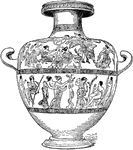
Hydria
A hydria is a type of Greek pottery used for carrying water. The hydria has three handles. Two horizontal…
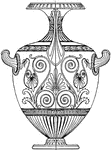
Greek Hydria
The Greek Hydria is used as a water-pot to carry water with from springs. Maidens carried it on their…

Greek Hydria
This Greek Hydria has a Kalpis form that is smooth and painted in black and red figures on the shoulder.…

Greek Hydria
This Greek Hydria is painted in black, reddish brown and white. Decorated of the highest class, the…

Antique Jar
This antique jar belongs to the later period of the red figure style used in Greek figural paintings.
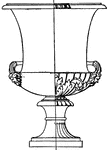
Antique Krater
This Antique krater is made out of marble. The decoration of the neck consists of figures rich in scroll…
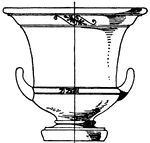
Greek Krater
This Greek krater is a type of antique vase that was typically used for mixing water and wine.
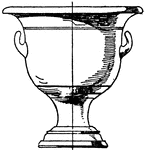
Greek Krater
This Greek krater is a type of antique vase that was typically used for mixing water and wine.
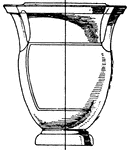
Greek Krater
This Greek krater has columnar handles. Its a type of antique vase that was typically used for mixing…
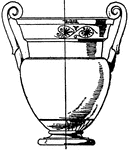
Greek Krater
This Greek Krater has volute handles that spiral upwards. Its a type of antique vase that was typically…









